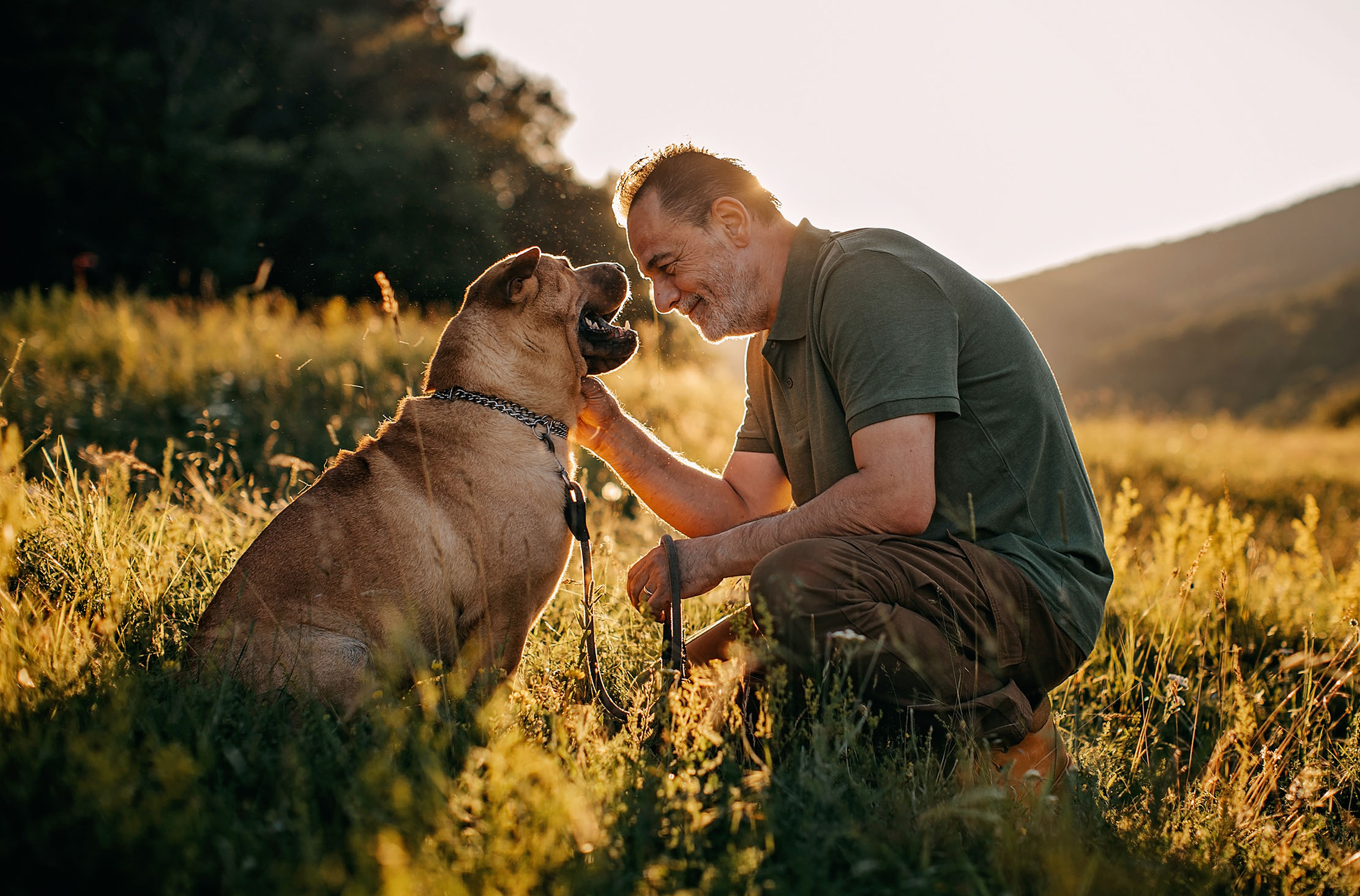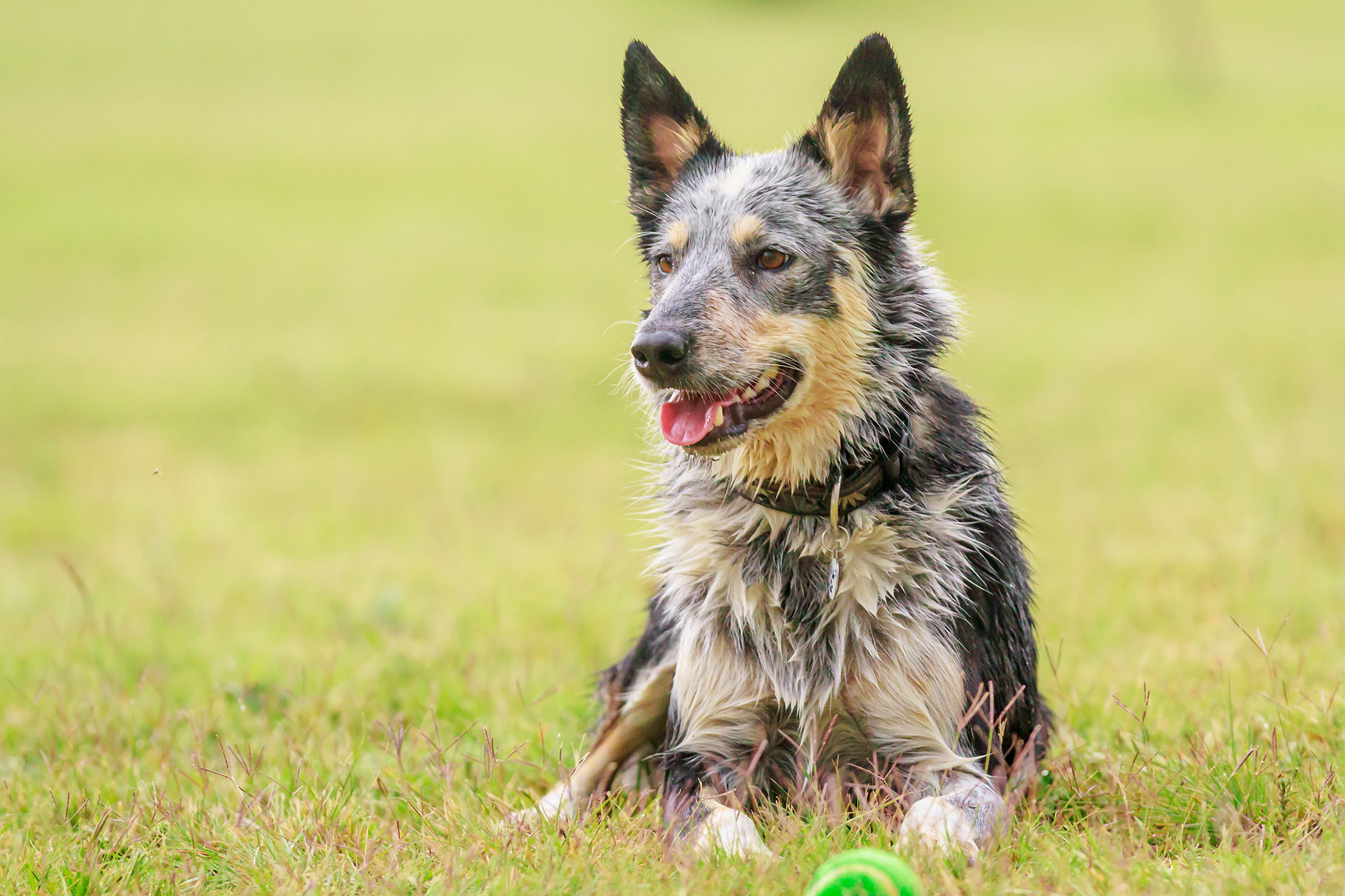How to 'reboot' an older dog whose training has fallen by the wayside, by expert trainer Ben Randall
The saying 'you can't teach an old dog new tricks' simply isn't true, explains Ben Randall.


Dog owners always start off with the best intentions when it comes to training — but as with everything in life, over time a few bad habits can start to creep in, and the more you get used to them, the harder it is to realise that it's time to get back on top of things.
So I'm doffing my cap to this week's reader, who wrote to me at paws-for-thought@futurenet.com. In trying to analyse some problem behaviour in her pet, she's read some of my previous articles and really taken on board the fact that her seven-year-old dog really needs more than a quick fix.
Dear BenI ran across your article on how to stop a dog chasing cars as I was trying to search how to begin to stop my seven-year-old cattle dog from lunging and wanting to chase after trucks when I'm walking him on a lead (I never let him off the lead except in a fenced yard or play area).I can see that by playing a lot of fetch with him I have inadvertently reinforced his chasing of anything moving, but I'm almost realising that I probably need to reinforce basic commands, get him to joyfully walk next to me, come when he is called, and stop jumping on people. He is friendly when he does this... but I don't my friends and acquaintances don't want a 55 lb cattle dog jumping on them!I realise, actually, that I have lost control of most of the training which we did when he was younger. I have obviously become lax and he has a mind of his own, as many dogs will and do. Any suggestions will be appreciated.—JK, via email
Please don't worry about what's happened: you've done exactly the right thing in realising what's happened here, and trying to do something about it. And you're not alone: a bit of laxness and a few bad habits creep up on lots of dog owners. If a dog gets away with something ten times a day, that's 300 times a month — which, for a seven-year-old, means that the bad habit might have been reinforced over 25,000 times.

Clearly, that's a fair bit to undo — but don't worry, all is not lost. I see this a lot, both with older dogs like yours and younger ones who've made a good start but stopped responding so well to commands. I call it the BG Reset, and it's an incredibly effective way to deal with ingrained habits that need to be eradicated. Here's how it's done.
1. Remove temptations that can trigger the behaviour
We need to not take the dog to areas where he can compound the problems while doing the reset. For you, this is going to mean avoiding walking him in places where the trucks will be going past. It'll also mean, for a while, stop playing any ball chasing games with him. As you'll see below he'll still be able to play ball games, but they'll be slightly different.
2. Rebuild your partnership, bond and trust with your dog
Once temptation is out of the way it's time to reset your dog’s mind with new commands.
That means working on getting your dog to sit patiently, no matter what distractions are going around you.
Exquisite houses, the beauty of Nature, and how to get the most from your life, straight to your inbox.
It means focusing on teaching your dog heelwork, stopping him from pulling on the lead.
You can also play fetch with your dog, but not by just throwing the ball and letting him go crazy . My piece on how to play fetch with your dog has some suggestions for this, teaching it in a calm, relaxed, focused manner in which your dog only gets the ball after a period of patience and calmness.
And finally, you need to teach the BG leave command. As ever for an issue which involves your dog's safety (and chasing trucks definitely falls in to this category) it's a key skill to have nailed. And don't worry about your dog losing any enjoyment of life; he'll start to see 'leave' as a positive, i.e. he knows that leaving the distraction means his reward will come, whether as a piece of food, a came with you, or praise and affection.

3. Repeat, repeat, repeat
Those 25,000 bad habit repetitions won't be reversed overnight, but typically within a few weeks of starting your new training regime, you'll have established new commands and reaffirmed, in a positive way, the commands he already knows.
You'll start to see your dog connecting far more with you, wanting to be around you more, and doing things with you. But use every single chance you can to practice again and again — especially at mealtimes. Don't just do a couple of repetitions and think it'll be enough for now; make each mealtime a short 5-10 minute session teaching fetch, leave, heel and recall. It'll make an enormous difference.
Normally after a month, assuming you've kept those bad habits at bay, the new habits will be in place. You'll enjoy a far more positive relationship with your dog.
Above all, take heart and trust that you'll get there. We recently had a cattle dog being trained via my gundog app, and have seen amazing results — and I've no doubt your dog can do the same.
Ben Randall’s book, ‘How to Train Your Gundog’, is out now. You can order it here at £40.
For more detailed advice about Ben Randall’s positive, reward-based and proven BG training methods, one-to-one training sessions, residential training or five-star dog-boarding at his BGHQ in Herefordshire, telephone 01531 670960 or visit www.ledburylodgekennels.co.uk. For a free seven-day trial of the Gundog app, which costs £24.99 a month or £249.99 a year, visit www.gundog.app/trial
